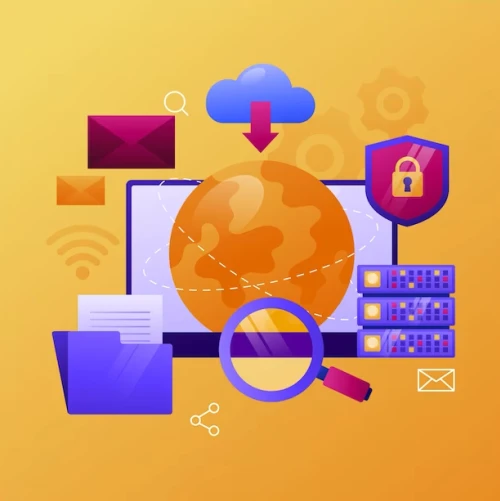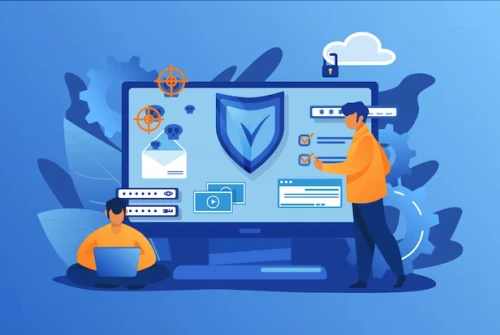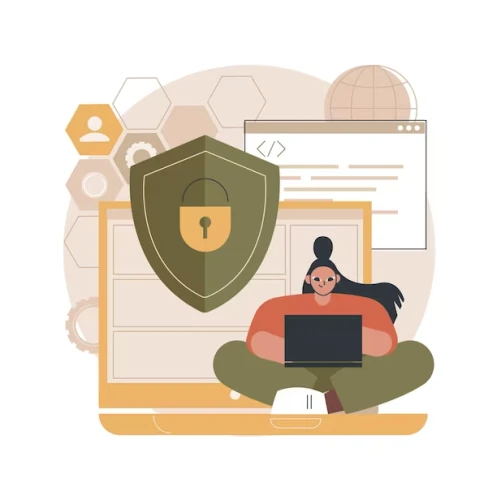Cybersecurity Regulations and Compliance for Linux Users

Security is an essential consideration when using computers and other technological devices. Linux admins and organizations must be informed about applicable legal measures related to the safety of their systems to ensure compliance and protect against possible risks.
Seeking legal advice from a cybersecurity lawyer can be highly advantageous in mitigating security threats and facilitating compliance. Let’s examine cybersecurity regulations impacting your systems and data, the threats Linux users face, best practices for enhancing Linux security, and the future of cybersecurity regulations for Linux users.
Understanding Cybersecurity Regulations
 Cybersecurity regulations are laws or rules that govern information security and the prevention of cyber threats. These regulations apply to several sectors, such as healthcare, finance, and government. Unfortunately, Linux users must learn about these regulations to meet the requirements and prevent their systems from being at risk. Some of the most significant cybersecurity regulations include:
Cybersecurity regulations are laws or rules that govern information security and the prevention of cyber threats. These regulations apply to several sectors, such as healthcare, finance, and government. Unfortunately, Linux users must learn about these regulations to meet the requirements and prevent their systems from being at risk. Some of the most significant cybersecurity regulations include:
- HIPAA: HIPAA, also known as the Health Insurance Portability and Accountability Act, is a law in the United States that deals with health information privacy. Users of the Linux operating system in healthcare facilities must meet HIPAA requirements. This is the one most Americans are familiar with.
- GDPR: GDPR stands for General Data Protection Regulation, the legal power to secure personal data in the EU area. GDPR rules apply to any Linux users who process individuals’ data.
- PCI-DSS: The Payment Card Industry Data Security Standard, often called PCI DSS, is a set of regulations that describes how to handle credit card information. Anyone dealing with credit card data using Linux is bound to comply with PCI-DSS policies.
Linux users can ensure their systems are secure and conform to the existing security standards. Applying such measures can also prevent other types of security threats, reducing the chances of data violation.
Practical Examples of Emerging Trends in Cybersecurity and Their Impact on Linux Users
Let's discuss emerging cybersecurity trends and their practical implications for Linux administrators and DevOps engineers. How are advancements in Artificial Intelligence (AI) and Machine Learning, the proliferation of Internet of Things (IoT) devices, and the widespread adoption of cloud computing shaping cybersecurity practices for Linux users?
I've collected a few examples to illustrate how these trends can be integrated into your Linux environments to enhance system security while ensuring compliance with evolving regulatory standards. Using this knowledge, you should be able to leverage these cutting-edge tools and strategies to safeguard your infrastructure.
AI-Driven Intrusion Detection Systems (IDS)
- How it Works: AI-enabled IDS can analyze network traffic in real time, identifying unusual patterns that may signify a security threat. These systems can differentiate between normal and malicious behavior.
- Impact on Linux Users: Linux users can deploy open-source AI-driven IDS solutions like OpenAI’s Gym or TensorFlow within systems like Snort or OSSEC. Ensuring these tools are correctly integrated and maintained can help comply with emerging regulations that mandate advanced threat detection capabilities.
Securing IoT Devices with Linux-based Gateways
- How it Works: Many IoT devices operate on Linux-based platforms. Linux gateways can be configured to use Network Firewalls and Access Control Lists (ACLs) to monitor inbound and outbound traffic, ensuring only authorized communications occur.
- Impact on Linux Users: As IoT regulations develop, Linux users might need to adopt these security practices to comply with new standards. For instance, securing smart devices in a home automation setup using Linux-based Home Assistant, configuring proper firewall rules, and network segmentation could be necessary to meet compliance.
Encryption of Data in Cloud Storage
- How it Works: With the increasing use of cloud services like AWS, Google Cloud, or Azure, encryption becomes vital. Encrypting data at rest and in transit ensures that sensitive information is protected from unauthorized access.
- Impact on Linux Users: Linux users can use tools like GnuPG or Linux Unified Key Setup (LUKS) to encrypt data before uploading it to the cloud. As new regulations might require stricter data protection measures, ensuring compliance with solutions like Amazon S3 encryption or Google Cloud’s Key Management Service (KMS) will be crucial.
By integrating these practical examples into our workflows, Linux users can improve their protection against threats and remain compliant with evolving regulations.
Compliance Requirements for Linux Users
 Linux users must meet existing compliances, including data protection regulations, access operation, control, and incident response. They must also ensure their systems are correctly set to satisfy these needs and have the tools to secure themselves against malicious threats. Some of the compliance requirements for Linux users include:
Linux users must meet existing compliances, including data protection regulations, access operation, control, and incident response. They must also ensure their systems are correctly set to satisfy these needs and have the tools to secure themselves against malicious threats. Some of the compliance requirements for Linux users include:
- Data Protection: Linux users must ensure that the information stored on it is secure from other parties who should not access it. This includes measures such as providing the confidentiality of data through encryption, limiting access to data, and implementing measures of backing up and recovery.
- Access Control: It also warns Linux users that access to their systems is restricted to personnel. Some ways include authentication, authorization, accounting (AAA), and good passwords.
- Incident Response: Linux users need strategies to help them respond once a security threat surfaces. This encompasses incident response management and periodic security checks and evaluations.
Linux users can be assured that their systems are protected and meet specific security standards and regulations. Moreover, adopting these measures may also prevent possible security breaches and/or threats, thus enhancing security.
Best Practices for Robust Linux Security
The ways to secure Linux are configuration, use of patches, and vulnerability scans. Linux users must ensure that the systems they configure implement these best practices and have the tools and assets to combat these threats. Some of the best practices for Linux security include:
- Secure Configuration: Linux users must confirm that their systems follow the best security practices. This involves implementing secure password management practices and configuring intrusion detection and firewall systems.
- Vulnerability Scan: Regular vulnerability scans are needed for Linux users to find possible security issues.
- Patch Management: Linux users must install the most recent security updates on their PCs.
Linux users may ensure their systems are safe from threats and significantly reduce the likelihood of security breaches. By implementing secure design, patch management, and vulnerability scanning, Linux users may confirm that their systems are safe and compliant with relevant security standards.
Tools and Resources for Linux Security
Linux users have a combination of tools available to improve their security. These tools and resources include intrusion detection systems, firewalls, and encryption software. Some of the tools and resources available to Linux users include:
- Firewalls: Linux users can use firewalls to limit system access and protect against potential threats.
- Encryption Software: Linux users can use encryption software to protect sensitive information from unauthorized access and disclosure.
- Intrusion Detection Systems: Linux users can use intrusion detection systems to detect potential security threats.
Future of Cybersecurity Regulations for Linux Users
 New technology and changing security threats may influence cybersecurity laws, affecting Linux users in the future. Linux users must keep up with the most recent changes to cybersecurity laws and compliance standards as the operating system continues to gain popularity. Some of the trends that may affect cybersecurity regulations for Linux users include:
New technology and changing security threats may influence cybersecurity laws, affecting Linux users in the future. Linux users must keep up with the most recent changes to cybersecurity laws and compliance standards as the operating system continues to gain popularity. Some of the trends that may affect cybersecurity regulations for Linux users include:
- Artificial Intelligence and Machine Learning: The increasing use of artificial intelligence and machine learning in cybersecurity may lead to new regulations and guidelines for Linux users.
- Internet of Things (IoT): The growing number of IoT devices may lead to new security threats and regulations for Linux users.
- Cloud Computing: The increasing use of cloud computing may lead to new security threats and regulations for Linux users.
By staying informed about these emerging trends and developments, Linux users can ensure their systems are secure and compliant with relevant security regulations.
Our Final Thoughts on Cybersecurity Regulations and Compliance
Cybersecurity regulations and compliance requirements are critical for Linux users to protect their systems from potential threats and provide compliance. By understanding these regulations and implementing best practices for Linux security, Linux users can protect their systems and confirm compliance.
Linux users should consult a cybersecurity lawyer to guarantee they meet all the necessary compliance requirements. Cybersecurity lawyers play a critical role in today's digital age by safeguarding entities and individuals from illicit data access, managing the legal aspects of cybercrime, and ensuring compliance with cybersecurity laws and policies. Their expertise is essential for navigating the complexities of cybersecurity threats and implementing effective strategies to mitigate risks and protect sensitive information.















